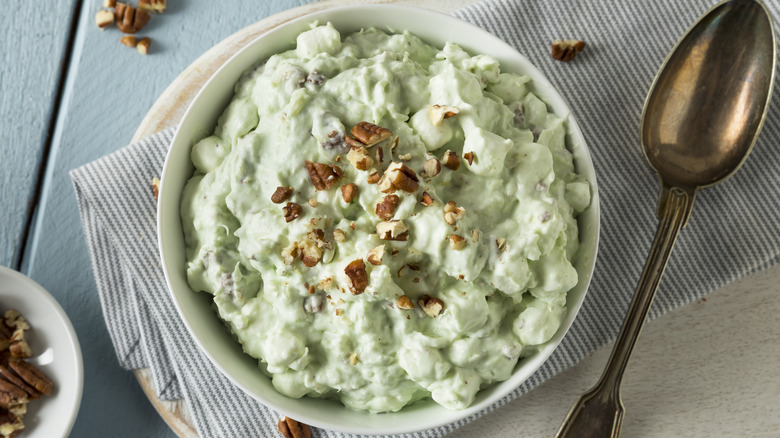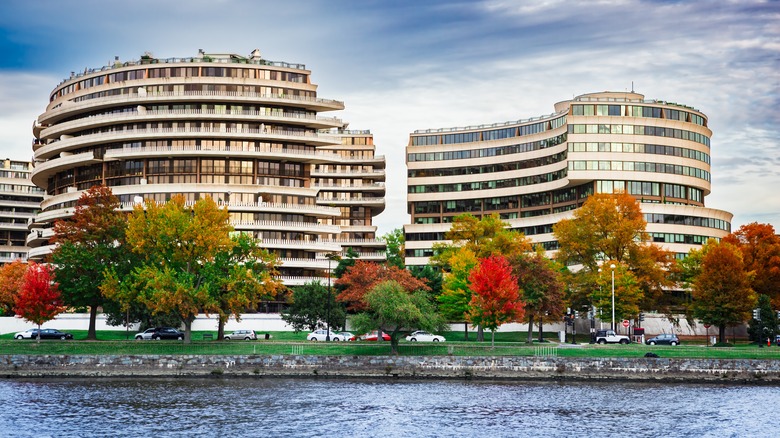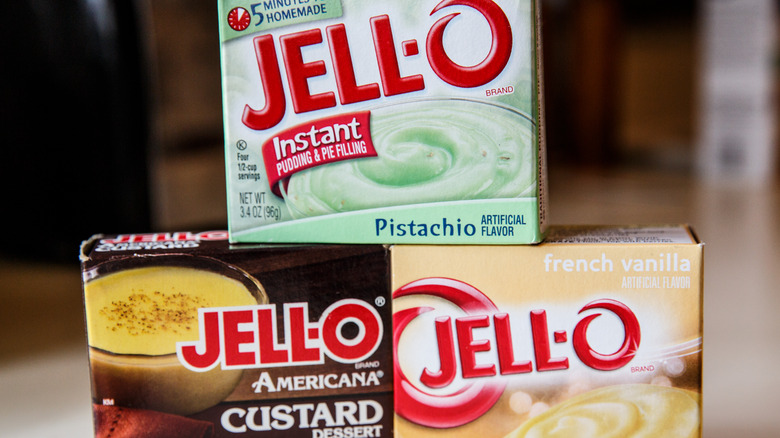The Mysterious Disappearance Of Watergate Dessert Salad
Like the term jumbo shrimp or old news, dessert salad exists as a delightful oxymoron, its beginning and end contradicting one another like a two-headed snake. This retro dessert had its heyday in the 1960s when convenient Jell-O mixes and canned fruit cocktails were all the rage. Filed under this oddball category is the Watergate salad, a dish that sports a green complexion but is anything but veggie-based.
Instead, this luncheon throwback gets its light lime hue from pistachio pudding mix. In addition to the pistachio mix, its sweet bulk is comprised of marshmallows, crushed pineapple, chopped nuts, and plenty of pre-made whipped topping. Crunchy, chewy, and creamy all at once, it's a textural pleasure. It shares a similar make-up to the iconic ambrosia salad, but chances are you've never heard of it, let alone tasted it. The Watergate salad has gone the way of many dessert salads before it, dismissed as a passé piece of food history. But, why did it become so reviled? And how did it come to be so popular in the first place?
A pistachio pudding dessert with a past
First, let's address the Watergate part of the name. Though it shares a name with the famous Washington D.C. hotel and the political scandal that took place there in 1972, this dessert salad can't be definitively linked to either one. The hotel kitchen can't claim the recipe like the Omni Parker can claim the Parker House roll, and nobody in the Nixon administration has ever admitted to tampering with it — among other things.
In fact, the recipe for Watergate salad is much older than its name. Back in the early 1900s, when Jell-O was first popularizing its new line of instant gelatins and jelly mixes, the company began publishing recipes it simply dubbed "delights." One such recipe was for the Pistachio Pineapple Delight, featuring all the ingredients you'd typically find in the Watergate salad except for the obvious one: pistachio pudding mix.
That particular ingredient didn't come on the market until 1976. Not long after, the first pistachio pudding iterations of the Watergate dessert popped up — initially as a minty green cake and later as the creamy dessert salad. The moniker may have been intended as a political joke, as it became popular at a time when America was still reeling from the political fallout of Watergate, but it's never been made clear.
It's not easy being green
As quickly as this particular dessert salad was embraced by the public, it just as quickly fell from grace. Within a few years, dietary sensibilities had begun to shift its focus to reducing sugar, a key element of many dessert salads. As more women entered the workforce in the following decade, the eating habits of the family became even more devoted to fast convenience, best solved by microwavable meals, not instant jello mixes. In a one-two punch, the main ingredient of the Watergate salad became less fashionable to use.
Unlike the Watergate scandal, which has left an indelible psychic scar, the Watergate salad has all but faded from memory. It seems an unfair loss, considering that the greatest crime the Watergate Salad committed was using a pudding mix, a culinary trick that is viewed today as both unhealthy and low-brow. Maybe it's due for a reevaluation and even a spot on your next dessert spread.



